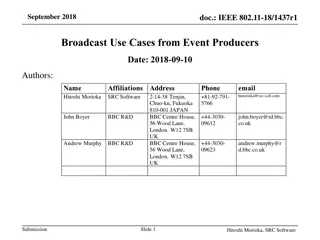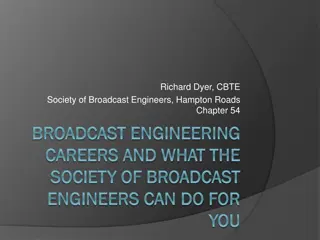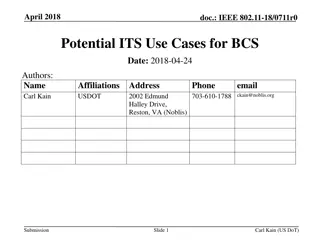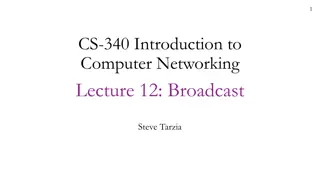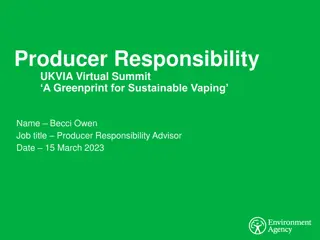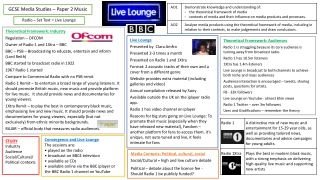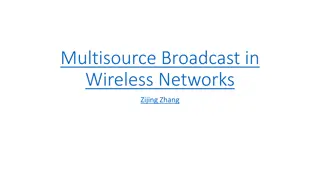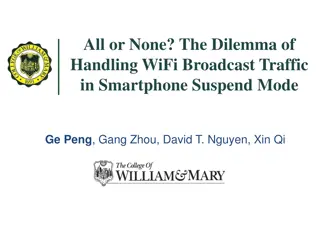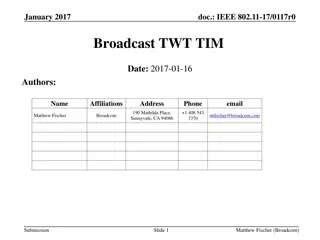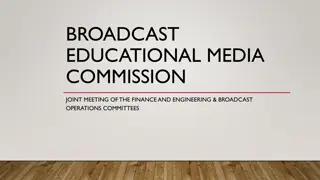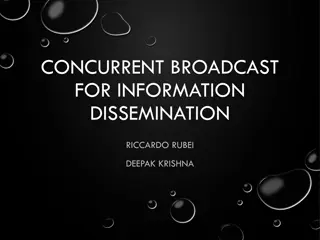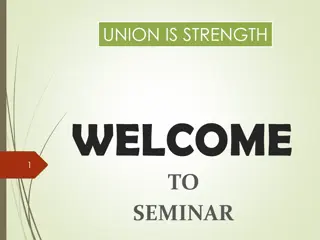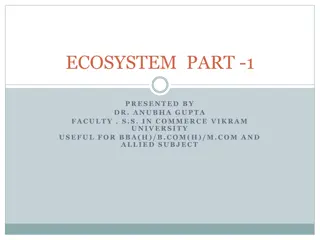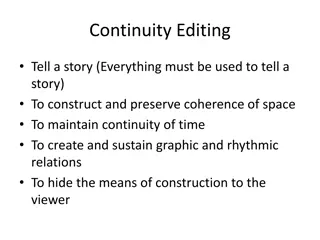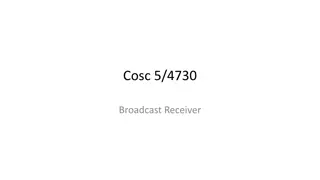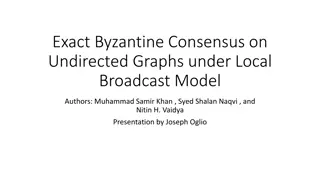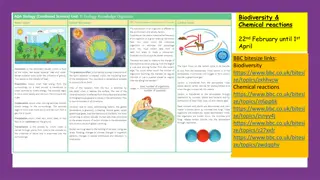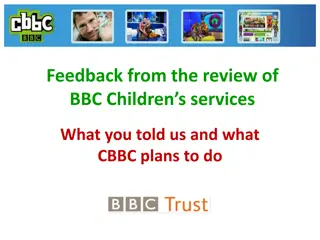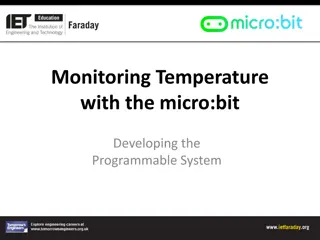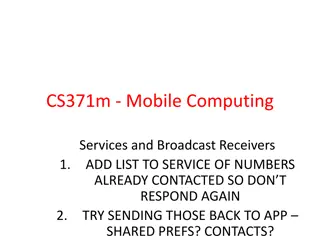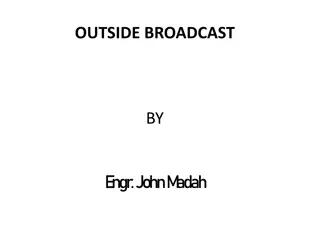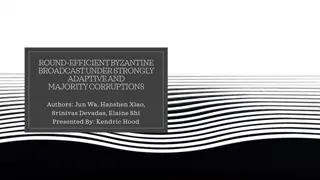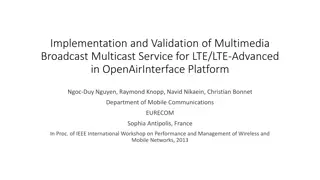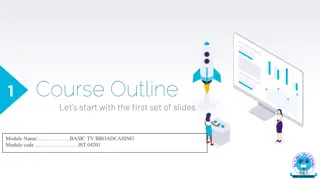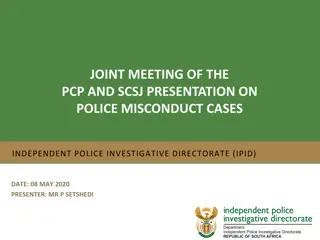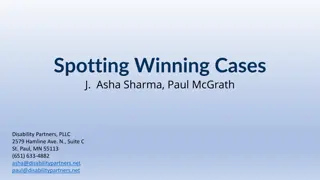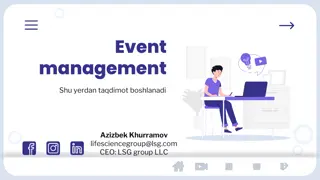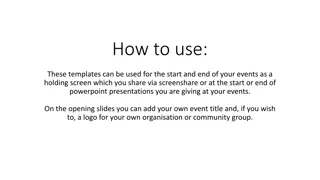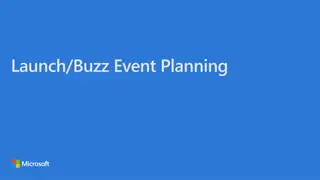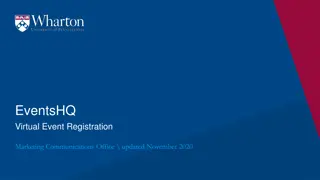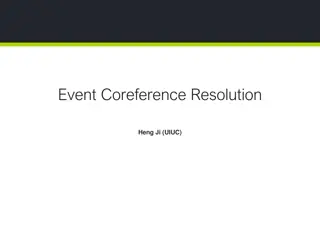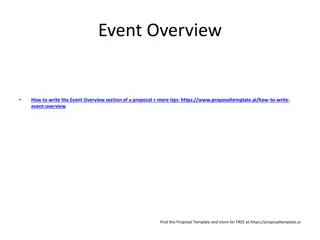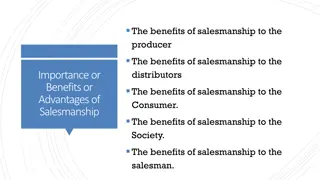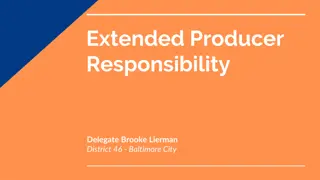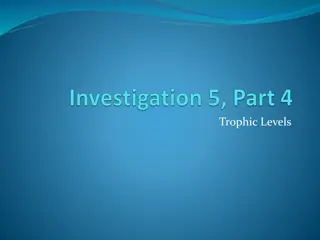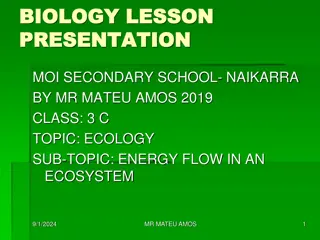BBC Event Producers: Broadcast Use Cases & Solutions
This document from September 2018 explores various broadcast use cases from event producers at the BBC. It discusses the challenges faced during public events like festivals and premieres and suggests solutions leveraging Wi-Fi technology to enhance audience experiences, staff operations, and overall event management efficiency.
Download Presentation

Please find below an Image/Link to download the presentation.
The content on the website is provided AS IS for your information and personal use only. It may not be sold, licensed, or shared on other websites without obtaining consent from the author. Download presentation by click this link. If you encounter any issues during the download, it is possible that the publisher has removed the file from their server.
E N D
Presentation Transcript
September 2018 doc.: IEEE 802.11-18/1437r0 Broadcast Use Cases from Event Producers Date: 2018-09-04 Authors: Name Hitoshi Morioka Affiliations Address SRC Software Phone +81-92-791- 5766 email hmorioka@src-soft.com 2-14-38 Tenjin, Chuo-ku, Fukuoka 810-001 JAPAN BBC Centre House, 56 Wood Lane, London. W12 7SB UK BBC Centre House, 56 Wood Lane, London. W12 7SB UK John Boyer BBC R&D +44-3030- 09612 john.boyer@rd.bbc. co.uk Andrew Murphy BBC R&D +44-3030- 09623 andrew.murphy@r d.bbc.co.uk Slide 1 Submission Hitoshi Morioka, SRC Software
September 2018 doc.: IEEE 802.11-18/1437r0 Abstract This presentation describes the use cases for BCS from the event producers in BBC. Slide 2 Submission Hitoshi Morioka, SRC Software
doc.: IEEE 802.11-18/1437r0 September 2018 Background The BBC hosts a number of public events every year. The events include 500 1000 people; Studio audience or premiere screenings 4,000 people; 6 Music Festival 9,000 people; Teen Awards 25,000 people; Radio One s Big Weekend Hitoshi Morioka, SRC Software Slide 3 Submission
doc.: IEEE 802.11-18/1437r0 September 2018 Contents Distribution for Waiting Audiences Audiences are typically made to arrive early and queue with little or no entertainment. For example; in 2017 the BBC ran a number of Doctor Who Christmas Special Premieres at various fringe locations around the North of England. These venues tended to have few facilities. One such venue was a disused cinema. The queuing fans would gain considerable benefit from being able to watch previous Doctor Who episodes or new exclusive content. As there are no existing facilities at these events a cheap and easy to rig Wi-Fi system would mean there would be no need for large screens and related logistics. Hitoshi Morioka, SRC Software Slide 4 Submission
doc.: IEEE 802.11-18/1437r0 September 2018 Program Monitoring for Staffs Radio One s Big Weekend is the most ticketed free music event in Europe. There are typically 2,000-3,000 backstage staff who are required to watch induction videos. They normally crowd around screens and watch the videos in batches. A system that could deliver the induction videos to people s personal devices would mean no rigging of screens and allow more people to watch the video at a time. Saving both time and money. Many people at large events need program feeds. These could be performers in dressing rooms or technical staff in backstage areas. Typically, this is done by rigging SDI feeds to monitors. This is expensive and inflexible. A Wi-Fi based system would allow people to monitor on their own devices, reducing costs, reducing rigging time and allowing the selection of multiple feeds. Hitoshi Morioka, SRC Software Slide 5 Submission
doc.: IEEE 802.11-18/1437r0 September 2018 Providing Additional Values at Festivals Enable a virtual drive-in-movie Deploy in limited area near charging facilities to provide video content for festival goers. At large festivals there are often simultaneous stages or it s impossible to get between stages promptly. Live streaming of video feed from simultaneous events/multiple stages would provide access to performances that festival goers might miss. Hitoshi Morioka, SRC Software Slide 6 Submission
doc.: IEEE 802.11-18/1437r0 September 2018 Problems Association limits per AP and achieving association on a busy network. Sleep mode and the need to spam the network with beacons to keep devices from going into power save mode. This had a varying impact, dependant on each device type/ operating system. Sometimes devices inappropriately switched 'roamed' between the access points we had on our network. Sometimes devices would switch to an AP that was further away and with lower signal strength, other times they would remain stuck on a low signal strength AP even when they were right next to some other AP. The L2 security enhancement is a must as it'll protect users from malign packets. Hitoshi Morioka, SRC Software Slide 7 Submission
doc.: IEEE 802.11-18/1437r0 September 2018 Additional Use Cases Use at train or bus stations Mobile phone networks and Wi-Fi networks congested Coffee shops/ shopping centres Free to air services In house promo Tie in with movies Hitoshi Morioka, SRC Software Slide 8 Submission
doc.: IEEE 802.11-18/1437r0 September 2018 Business Cases Chip/ equipment sales Some of the BBC use cases low numbers of equipment High numbers of chips in devices Video delivery revenue Premium services Advertisements Hitoshi Morioka, SRC Software Slide 9 Submission
doc.: IEEE 802.11-18/1437r0 September 2018 Broadcast Wi-Fi by BBC R&D https://www.bbc.co.uk/rd/projects/broadcast-wifi Hitoshi Morioka, SRC Software Slide 10 Submission


